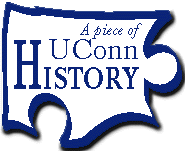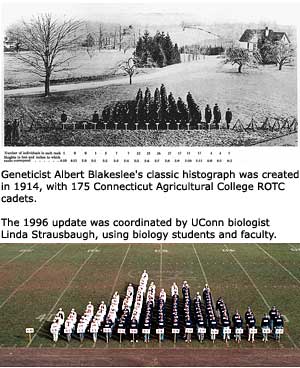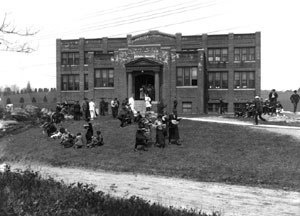This is an archived article. For the latest news, go to the Advance Homepage.
For more archives, go to the Advance Archive/Search Page 
| ||||||
|
100 Years Ago - 1899 85 Years Ago - 1914 Although its name included the word college, Connecticut Agricultural College did not have a curriculum that matched that designation. Charles Lewis Beach set out to change that when his administration as president began in 1908. Curriculum changes began in 1911, and two- and three-year courses of study were phased out. The final phase was achieved in 1914 and, because none of the students had yet completed the new four-year program, commencement was cancelled that year. It was also in 1914 that the college adopted the requirement of a high school diploma for admission.
During the academic year 1913-1914, the college offered its first course in genetics - believed to be the first organized genetics course offered in the United States. The instructor was Albert Blakeslee, a prolific author who published 221 articles on heredity and genetics between 1904 and 1955. He left Storrs in 1915 and later headed Cold Spring Harbor Laboratory. In 1914, Blakeslee posed 175 Connecticut Agricultural College military cadets by height for a living histogram which was reproduced in textbooks for decades. A modern version of the photo was made in 1996 using current biology students and faculty.
75 Years Ago - 1924 In 1924, the chamber was back with a second round of recommendations: that new buildings be delayed; that the maintenance budget be increased by 10 percent; and that there be a new study of the entire state educational system. The following year, Gov. Hiram Bingham told the General Assembly that the college should be limited to becoming "an exceptionally effective agricultural college rather than an institution for general education." With private institutions like Yale, Wesleyan and Trinity in mind, Bingham said "Any young man ... can receive a college education in Connecticut, no matter how limited his financial resources."
The legislature approved a measure that limited enrollment to 500 students, "preference being given to students desiring to take the four-year college course in agriculture." Faculty took advantage of the limit and raised entrance standards and demands on scholarship.
70 Years Ago - 1929 Also in 1929, the Charles L. Beach Building opened, replacing Old Main, which had been built in 1890. Shored up with four timber buttresses, Old Main was torn down, leaving the Agricultural Experiment Station as the last frame building of the original five college structures.
65 Years Ago - 1934 Also that year, E.L. Jungherr, an animal pathologist in the Department of Animal Diseases, published results of his pioneering research in the role of viruses in poultry diseases. Jungherr would later become a leading international authority on the histopathology of avian diseases (the analysis of tissue changes to diagnose poultry diseases). In 1945 he received the Borden Award of the American Poultry Science Association in recognition of his contributions to the field.
60 Years Ago - 1939 Also in 1939, an extension center, offering a complete freshman course, opened in Hartford Public High School, with classes held in the late afternoon and evenings. The center was the forerunner of the Hartford campus, which opened in 1946. Mark J. Roy Source: unpublished manuscript, 1980, Evan Hill. |



